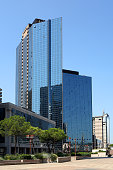





찬양대 :
지휘자 :
방영일 :
A wine tasting individual is often referred to as a oenophile. This term describes somebody who has a love for wine and appreciates its numerous qualities.

When attending a wine tasting, it's fairly widespread to incorporate some food within the expertise. While the primary focus is on sampling varied wines, Hiop meals can improve the overall tasting expertise.
Eating throughout a wine tasting helps to:
Typically, gentle snacks are offered at wine tastings. These might include:
In abstract, while you don't have to eat throughout a wine tasting, including food can enhance your experience and allow for better appreciation of the wines being sampled.
The processing steps of wine contain a quantity of stages that transform grape juice into the finished product enjoyed in wine tasting. Each step plays a vital position in determining the wine's flavor, aroma, and overall quality.
The first step in the winemaking course of is harvesting the grapes. This can be carried out either by hand or using machines, typically happening in late summer season or early fall when the grapes reach their optimal ripeness.
After harvesting, the grapes are crushed to launch their juice. This course of may also contain destemming, where stems are removed to avoid bitterness in the final product. The result's a mixture of juice, skins, and seeds known as should.
The should undergoes fermentation, the place yeast is added to transform sugars into alcohol and carbon dioxide. This step can take from a number of days to weeks, and the temperature is carefully controlled to ensure optimal fermentation.
After fermentation, the wine is pressed to separate the liquid from the solids. This step is essential, especially for purple wines, to extract shade and tannins from the skins. The pressed juice is collected as the brand new wine.
The wine is then aged in numerous containers, similar to stainless-steel tanks or oak barrels. Aging can final from a couple of months to a number of years and allows the wine to develop complexity and depth of flavor.
Before bottling, the wine undergoes clarification to take away any remaining solids. This is commonly achieved by way of methods like filtration or fining, leading to a clearer and extra visually appealing wine.
Once clarified, the wine is ready for bottling. It could undergo a last adjustment of acidity or sweetness earlier than being sealed in bottles, prepared for distribution and tasting.
Finally, the completed wine is ready for tasting. Enthusiasts can respect its unique flavors and aromas that resulted from the meticulous winemaking course of.
Each of those steps contributes to the wine's character, making the expertise of wine tasting an exploration of the artistry and science behind winemaking.




